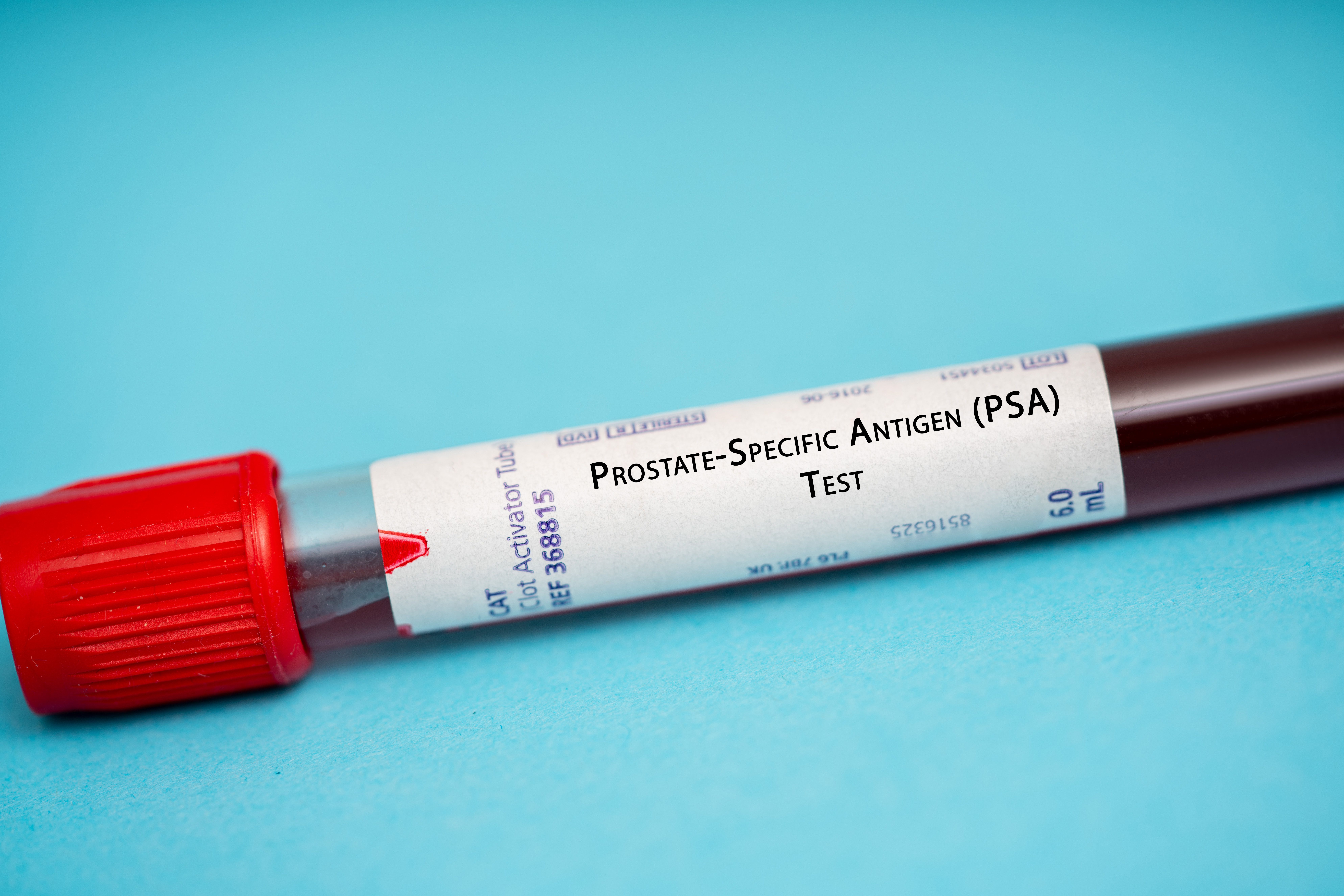News
Article
Rise in PSA Levels May Predict Treatment Response in Prostate Cancer
Key Takeaways
- Hormonal therapies are effective for recurrent and advanced prostate cancer, with PSA levels crucial for risk stratification.
- Combination hormone therapy is advised for metastatic prostate cancer, showing prolonged survival in phase 3 studies.
The rate at which PSA rises after hormonal therapy for prostate cancer is a key factor in determining the effectiveness of the treatment.
The rate at which PSA levels rise after hormonal therpay for prostate cancer can predict treatment response.

For patients with recurrent and advanced prostate cancer, hormonal therapies may prove to be a viable option in both intermittent and continuous administration; however, the rate at which PSA rises is an important risk stratification factor, as presented by an expert at the CURE® Educated Patient® Prostate Cancer Summit.
Dr. Rahul Aggarwal, an associate director for clinical sciences at the University of California San Francisco presented information regarding hormonal therapies for recurrent and advanced prostate cancer at the summit. Agarwal discussed the mechanisms, eligibility, administration and side effects of various drugs including Lupron (leuprolide), Zoladex (goserelin), Firmagon (degarelix), Orgovyx (relugolix) and first/second generation antiandrogens.
According to the National Cancer Institute, prostate-specific antigen (PSA) is a protein made by the prostate gland and found in the blood. Men with prostate cancer may have higher than normal PSA blood levels.
In addition, Aggarwal suggested that combination hormone therapy should be the standard of care for all patients with metastatic (spreading) prostate cancer as all four hormonal agents have shown prolonged survival compared to Lupron alone in randomized phase 3 studies. He also referenced a phase 3 study published in The New England Journal of Medicine suggesting that, for patients with low-volume metastatic prostate cancer, discussing whether to treat the primary tumor in the prostate may be essential.
“So, my take home points here is that PSA nadir [how low PSA drops after six, up to 12 months after the start of therapy] and the volume of metastatic disease provide this prognostic information for our patients, as well as help guide decision making in terms of our therapy,” Aggarwal said. “Every patient should be offered intensified therapy with ADT plus an oral hormonal agent, with a choice of therapy dependent on those factors, such as side effect profile, medical conditions, drug, drug interactions, etc.”
As mentioned in the presentation, common side effects for patients include hot flashes, fatigue, breast growth, joint pain, low bone density, insulin resistance, weight gain, decreased muscle, mood/cognitive changes and sexual side effects. Side effects that occur when administered abiraterone/prednisone include, hypertension, low blood potassium, fluid overload, elevated liver enzymes and elevated blood sugar. Side effects that occur during second generation antiandrogens include fall risk, nausea/decreased appetite, fracture and seizure, which is rare.
“When a patient goes on androgen deprivation, this certainly can be a life-changing event with many side effects. The good news is we have strategies to really try to help manage many of these side effects,” Aggarwal said.
Among low-risk patients, Aggarwal suggested that a detectable and rising PSA level does not imply starting immediate hormone therapy for every patient; however, those with a higher risk are recommended to start androgen deprivation.
“This is clearly a scary time [for] patients starting treatment, we really try to get a sense of saying, ‘Well, we expect your PSA to drop.’ But then the next question is, well, for how long? What are my longer-term outcomes and the nadir PSA? How low it drops after six, up to 12 months after the start of therapy actually gives us a lot of information about how sensitive the prostate cancer is to therapy, and provides a pretty good prediction tool for what the long-term outcomes are going to look like.”
Aggarwal suggested that patients with longer PSA doubling time and a slower-moving PSA surveillance, are recommended for hormonal therapy.
Regarding length of treatment, a seminal study performed more than 10 years ago, and findings of which were published in The New England Journal of Medicine revealed no difference with intermittent versus continuous hormone therapy for rising PSA patients; suggesting that researchers were able to potentially improve quality of life during that period of time when patients were not on therapy. “We absolutely think about intermittent hormone therapy, even in the higher-risk setting,” Aggarwal stated.
For more news on cancer updates, research and education, don’t forget to subscribe to CURE®’s newsletters here.




